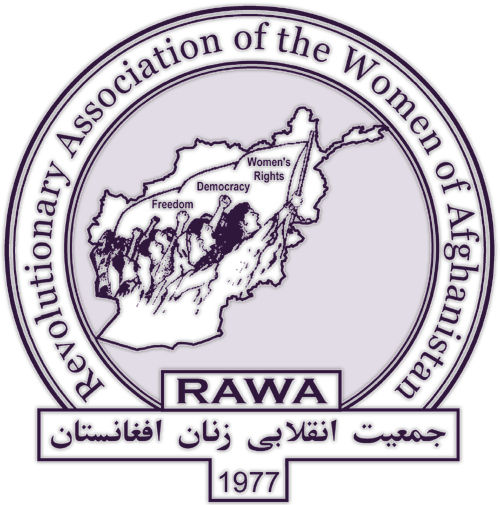Daily Report
Mexico: students wounded as protests continue
Two students were wounded on Nov. 15 at the campus of the National Autonomous University of Mexico (UNAM), in the Coyoacán section of the Federal District (DF, Mexico City), when a police agent fired his pistol at a group of youths. Witnesses said the incident started when two men from the DF judicial police and two women from the DF prosecutor's office arrived in a car and began photographing students near the Che Guevara Auditorium; student activists have been meeting in the auditorium to plan actions protesting the killing of six people and the abduction of 43 teachers' college students in Iguala de la Independencia in the southwestern state of Guerrero the night of Sept. 26-27. When a group of students challenged the four officials, one of the two agents responded by assaulting a student and then firing his pistol at the ground. The same agent fired again, several times, as all four officials fled the campus on foot, pursued by a group of students. The shots wounded one student in the foot and grazed another student's knee; a dog was also injured.
US elite starts to doubt 'Mexican Moment'
Although some US investors still seem confident about opportunities in what they have called the "Mexican Moment," concern is growing in US ruling circles as militant protests continue in Mexico in response to a Sept. 26-27 massacre and mass abduction in the southwestern state of Guerrero. "Violence, impunity and corruption are once again dominating the news about Mexico in the US, tarnishing, if not cancelling, the image so successfully cultivated by the government of [President] Enrique Peña Nieto over the past two years," David Brooks, US correspondent for the left-leaning Mexican daily La Jornada, wrote on Nov. 16.
Latin America: GAO reports on FTA labor violations
On Nov. 13 the US Government Accountability Office (GAO), an agency that investigates federal spending for Congress, released a report on the US government's handling of labor violations in countries with which it has "free trade" agreements (FTAs). Recent FTAs, such as the 2004 Dominican Republic-Central America-United States Free Trade Agreement (CAFTA-DR), have requirements for participating countries to meet certain standards in labor practices. The GAO claimed to find progress in this area in the partner countries—but also "persistent challenges to labor rights, such as limited enforcement capacity, the use of subcontracting to avoid direct employment, and, in Colombia and Guatemala, violence against union leaders."
Colombia: peace talks off as FARC capture general
Colombia's government Nov. 17 suspended peace talks with the FARC after the apparent capture of an army general by the guerillas. President Juan Manuel Santos demanded the return of Brig Gen Ruben Dario Alzate Mora "safe and sound." The president told Reuters: "Tomorrow negotiators were to travel to another round of talks in Havana. I will tell them not to go and that the talks are suspended until these people are released." (BBC News, Nov. 17)
Philippines: justice deferred in 2004 massacre
Some 500 people gathered Nov. 16 at a Central Luzon property of the family of Philippines President Benigno Aquino to commemorate a confrontation 10 years ago between government forces and striking workers, and to demand justice for the seven men killed. Protesters, all local rural workers, burned an effigy of Aquino riding a bulldozer. In what survivors group Ambala calls the "Hacienda Luisita massacre," police and military troops retook a section of the Central Azucarera de Tarlac (CAT) sugar complex that had been occupied by members of United Luisita Workers Union (ULWU). Although security forces were acting on a court order, the strikers resisted, saying talks were ongoing with the management of both CAT and Hacienda Luisita Inc (HLI), the landowner. Aquino at the time of the massacre was a lawmaker representing the local Tarlac province in Manila, while also serving as manager of the Hacienda Luisita estate. The estate is owned by the Cojuangco family—that of the president's mother, ex-president Corazon Aquino.
Nicaragua: opposition mounts to canal scheme
The Nicaraguan government and Hong Kong Nicaragua Canal Development Investment Co. (HKND) will soon publish the "exact and definitive map” of the interoceanic canal, with construction slated for begin by year's end. In televised statement, project spokesperson Telemaco Talavera said details will also follow on feasibility and environmental impact studies, which involved a census of 29,000 people in the catchment area of 1,500 square kilometers. The canal will join the Caribbean Sea with the Pacific Ocean through a 278-kilometer trench, including 105 kilometers through the southern part of Lake Nicaragua, or Cocibolca (Sweetwater) as it is known in the local indigenous language. (TeleSUR, Nov. 12)
US ground troops for Mosul assault?
Martin Dempsey, head of the US joint chiefs of staff, arrived in Baghdad on Nov. 15, days after President Barack Obama authorised sending up to 1,500 more forces to Iraq—roughly double the planned US "post-withdrawal" presence—to advise and train Iraqi and Kurdish forces. Before his trip, Dempsey was questioned about whether US troops will accompany Iraqi forces in an operation to take back Mosul, and said it was unlikely "but we're certainly considering it." He added: "We're going to need about 80,000 competent Iraqi security forces to recapture territory lost, and eventually the city of Mosul, to restore the border."
Kurdish revolution: what odds for survival?
ISIS is committing war crimes and crimes against humanity on a large scale in areas under its control, the UN Commission of Inquiry on Syria finds in its new report—citing massacres, beheadings, torture, sexual enslavement and forced pregnancy. "The commanders of ISIS have acted wilfully, perpetrating these war crimes and crimes against humanity with clear intent of attacking persons with awareness of their civilian or 'hors de combat' [non-combatant] status," the report said. "They are individually criminally responsible for these crimes." Based on more than 300 interviews with people who have fled areas under ISIS control, as well as photographs and video footage released by ISIS itself, the report calls for the perpetrators to be brought to justice. (DİHA, Nov. 14)















Recent Updates
18 hours 4 min ago
1 day 16 hours ago
1 day 16 hours ago
3 days 17 hours ago
3 days 17 hours ago
3 days 18 hours ago
3 days 21 hours ago
5 days 4 min ago
6 days 5 hours ago
6 days 18 hours ago